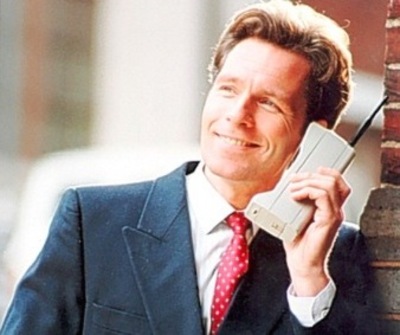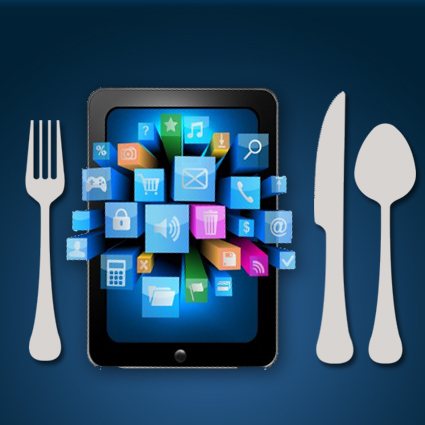Since the dot com boom in 1997, technology has increasingly become personal and very specific. People with no IT background, armed with just ideas are creating niche software products, apps and widgets for any and everything our personal and professional life throws at us.
This is definitely adding convenience, increasing our productivity, reducing corruption etc. but at the same time is adding to the chaos and user fatigue on the other hand.
For example we take a simple process of a customer coming in to dine in a restaurant.
A few years back prior to the tech boom and much before apps made our lives ‘convenient (here’s an interesting post that discusses this further)’, all a diner had to do was pick up a phone and call the restaurant to make a booking. If the restaurant was full up then one would call some other restaurant. Then all the diner had to do was turn up at the restaurant at the chosen date and time, enjoy the meal, maybe leave some feedback on the comment card and then head back home or wherever one was inclined to go.
Cut to present day and dining out could never be so complicated and replete with making a choice at every juncture of the dining process!!
So let us start the journey from:
The Booking Process
In the name of convenience and removing the stress out of making a reservation there are multiple ways to make a booking at a restaurant.
The diner can choose between downloading an app from the app store or from the Google Play store, share their contact details and in some cases even the credit card details in order to register. They can also navigate to the restaurant website, complete the registration process and after all that try and make a booking.
So now one has to remember multiple login ids and password or allow our browsers or phones to remember the same. And in spite of all that, sometimes, you may get a call from the restaurant you have made a booking at through your app, saying that your booking cannot be confirmed as there were no tables available.
Some places will even ask you to part with your card details even before the booking process is complete!!!
Post Booking Process
You will now get a confirmation email with a booking reference number, which will enable you to modify or cancel your booking. The email will also give you a link to google maps or any other mapping software to find directions to the restaurant and also sometimes the ability to invite other diners.
Post Dining Process
Once the diner has finished dining they will be asked to fill in a survey/comment form. This could be a paper card or tablet or even an email a few days after the meal gently nudging them to fill in an online survey or even go to Tripadvisor!
For the Restaurant it gets even more difficult to make coherent choices because there are so many players and options, all touting more features than the other.
As the internet has become a big provider of commerce to all industries, so has it changed the way restaurants attract diners. It has become imperative for restaurants to have a substantial online presence.
That would mean buying/renting or adopting an online booking platform at a monthly cost or pay a charge per guest booked through the platform.
Once the Booking is made, the restaurant will receive the booking either through an email or a text message or even get pushed straight on to the Reservation and Table management software. This is depending on which of the 100s of services that the restaurant has signed up for!!
There are more than a dozen major booking widgets and a few hundred minor options.
There are around 10 major Reservation and Table management systems and scores of minor players.
Then the restaurants have to choose a POS that is suitable to their operations from the hundreds available in the market place and more being added every day.
Payment solutions..
Feedback generators…
Marketing platforms….
The list goes on and on and on.
In this cacophony of products and services it is increasingly becoming difficult for restaurants and users alike to choose the product or platform that is just right (not to forget, even more inventive restaurant technologies aren’t that far away)

There can never be any one product that has all the features and services which will satisfy every diner or restaurant owner.
The diners are then forced to register with multiple platforms to achieve the same result – Book a table!!!
The Restauranteurs in most cases end up using products from different companies that do not talk to each other as no one company’s product can provide all the features. This then forces them to pay each provider to integrate the different systems together, provided the companies are even ready to share API’s!!
The other option for restauranteurs is to use a company that can provide all services under one roof but then they are charged a hefty price in return.
In the short term I foresee these problems persisting and products within the same category vying for space. Dining out is common practice now and some of the companies that provide services and products for the Restaurant industry are even hitting Billion Dollar market capitalization. Opentable is one shining example.
Everybody wants a slice of the pie and new products are being launched every other month in the already crowded market place.
Eventually majority of the companies will either be bought over by bigger companies or established players, who feel threatened by the rival’s superior product offering or end up shutting shop as they will not be able to compete with rival’s providing an end to end product.
So how does one come up with a winning product, which provides a complete experience to diners and restauranteurs alike.
In the early days of politics voters got to choose between 2 or 3 political parties and therefore it easy for the voters to decide and easy for the political parties to retain their voter base.
In present day politics coalition governments are increasingly the norm as voter loyalty gets fragmented between the multitudes of parties, each with many unique promises of their own.
Now if we consider the Voters to be Diners and restaurateurs and the Political Parties to be Companies providing Services and Product, it becomes a very easy analogy to understand.
Cobbling up a coalition of best in class products at various service levels will prove to be beneficial for the respective companies as majority of the ‘Voters’ will most likely align with them rather than bit players. This will result in the bit players being forced to the fringes, providing unsustainable discounts and features (Remember Promises made by some political parties and then never met) and eventual oblivion.
Product Coalition is the way forward. Either that or be faced with monopolistic organisations (Remember the days of Internet Explorer anyone?) charging their customers a premium as there will be no viable alternative left. Also innovation perishes within markets ruled by monopolistic companies.
